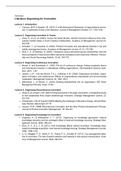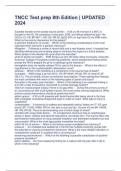Summary
Summary of Articles Organizing for Innovation
- Course
- Institution
Crossan, M.M. & Apaydin, M. (2010) A multi-dimensional framework of organizational innovation: A systematic review of the literature. Journal of Management Studies, 47: . Chua, R., & Jin, M. (2020). Across the Great Divides: Gender Dynamics Influence How Intercultural Conflict Helps or Hurts Cre...
[Show more]




